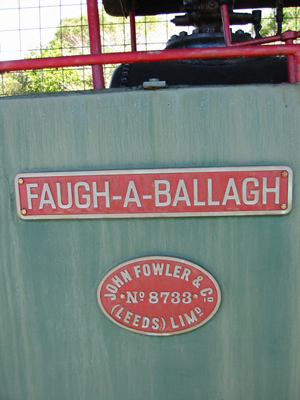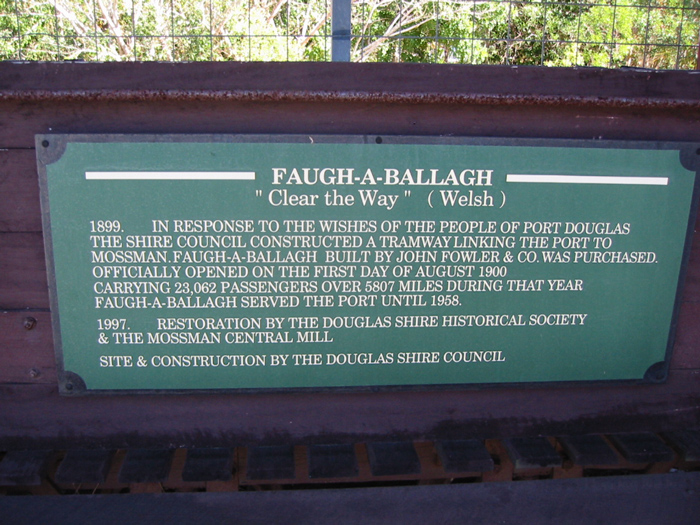|
|
Faugh-a-Ballagh Plinthed at Port Douglas |
|

|
The name and builder's plates attached to Faugh-a-Ballagh.
Photo date 19 August 2004.
|

|
This photo of 19 August 2004 shows the historical notes attached to the open wagon displayed behind Faugh-a-Ballagh. However, ‘Faugh-a-Ballagh’ is Irish, not Welsh! |

|
The secure plinth at Port Douglas containing
Faugh-a-Ballagh, open wagon & bogie passenger carriage. 19 August 2004
The sign attached to the open wagon has since been corrected
to reflect the name’s Irish rather than Welsh etymology. A small victory for correctness! My thanks to Tony Smith for providing this updated image,
dated 14 February 2021. |
References
|
a |
Light
Railway Research Society of Australia Inc. Web site (as at 14 March 2021): 'Preserved
Australian Sugar Cane Locomotives' list by John Browning. |
|
b |
Historical notes displayed at the
Faugh-a-Ballagh plinth. |
|
c |
Information
provided by Tony Smith via email, 19 February 2021 |
Page updated: 14 March 2021
|
Government Railways: |
|
|||||||||
|
Private & Industrial Railways: |
|
